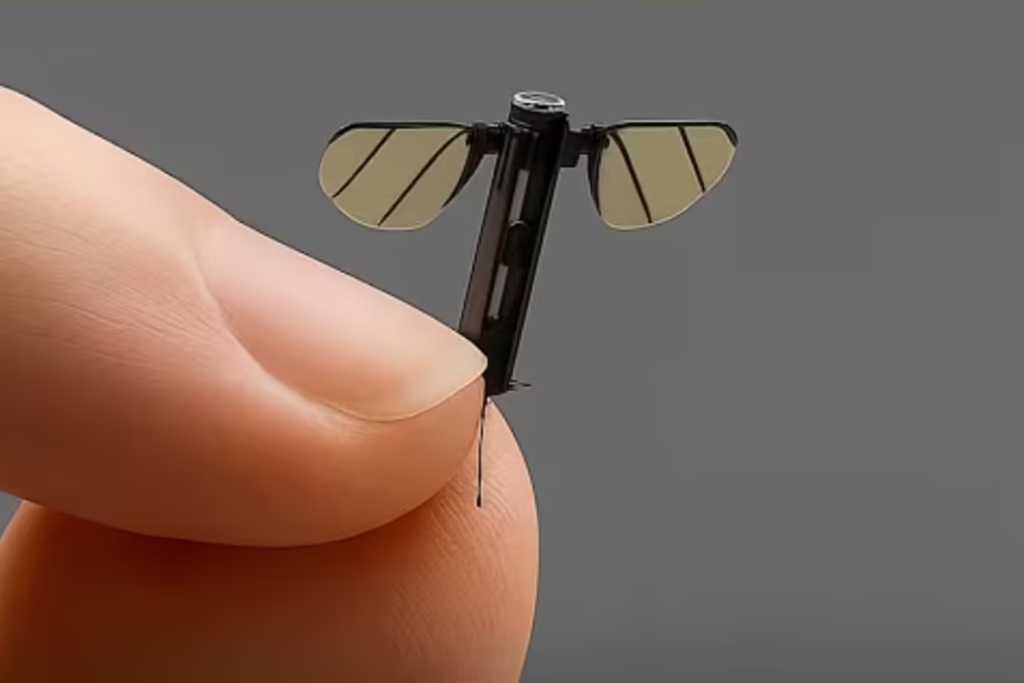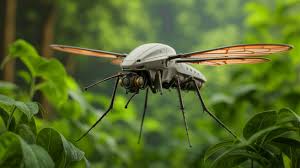China’s military has unveiled a groundbreaking mosquito-sized drone, a leap in micro-robotics that could redefine covert surveillance and battlefield reconnaissance. Developed by the National University of Defence Technology (NUDT) in Hunan province, this tiny unmanned aerial vehicle (UAV) mimics a mosquito’s appearance, weighing under 0.3 grams and measuring just 2 cm long. Showcased on CCTV-7, China’s military channel, the drone promises to transform intelligence gathering with its near-invisible design.
As global competition in defense technology intensifies, this innovation highlights China’s growing prowess. Explore how this microdrone could shape the future of warfare and drive innovation at www.ytcventures.com.
A Tiny Titan: Design and Capabilities
The mosquito drone, described by NUDT student Liang Hexiang as a “mosquito-like robot,” features two leaf-like wings that flap up to 500 times per second and three hair-thin legs for perching. Its compact frame houses miniature cameras, microphones, and sensors, enabling it to capture images, audio, and electronic signals without detection by conventional radar systems. Controlled via smartphone, the drone is tailored for covert missions, such as infiltrating secure facilities or urban environments for real-time intelligence. However, its battery life limits it to short indoor flights, a challenge shared by similar micro-UAVs globally.

China’s Defense Tech Ambition
China’s mosquito drone is part of a broader push to lead in micro-robotics, aligning with the People’s Liberation Army’s modernization strategy. NUDT’s research also includes artillery-launched drones and humanoid robots, reflecting a focus on versatile, AI-driven technologies. Experts like Timothy Heath from the Rand Corporation note that such drones excel in intelligence, surveillance, and reconnaissance (ISR) tasks, particularly in confined spaces where larger drones struggle.
This capability could give China an edge in asymmetric warfare, challenging conventional forces with stealth and precision.
Global Context: A Race for Micro-UAV Supremacy
China isn’t alone in this field. Norway’s Black Hornet 4, a palm-sized drone used by U.S. and U.K. militaries, offers 30-minute flight times and thermal imaging, earning the 2025 U.S. DoD Blue UAS Refresh award. Harvard’s RoboBee, with wings beating 120 times per second, explores applications from surveillance to medical diagnostics.
The U.S. Air Force is also developing microdrones, though details remain scarce. China’s mosquito drone, however, stands out for its insect-like stealth, raising concerns about espionage and privacy.
Ethical and Security Concerns
The drone’s potential extends beyond military use, sparking debate. Security expert Sam Bresnick warns it could infiltrate government facilities or track individuals undetected. Futurist Tracey Follows raises dystopian fears, citing Black Mirror-style scenarios where microdrones could carry pathogens or execute autonomous attacks.
Privacy advocates highlight risks of civilian misuse, such as spying or stealing data like passwords. As micro-UAVs shrink, traditional security systems may struggle to counter them, necessitating new ethical and legal frameworks.

Implications for Innovation and Investment
China’s mosquito drone underscores the global race for micro-robotics, with applications in defense, medicine, and environmental monitoring. For investors, this signals opportunities in AI, sensor miniaturization, and battery technology.
At www.ytcventures.com, explore how startups and ventures are driving innovation in these fields, from stealth tech to sustainable solutions. As nations compete, the fusion of biology and robotics could unlock new markets and transform industries.

Conclusion
The mosquito-sized drone is a testament to China’s advancing defense technology, blending stealth with cutting-edge engineering. While its battlefield impact may be limited by battery constraints, its potential to reshape surveillance and spark ethical debates is undeniable.
Stay ahead of defense tech trends and discover investment opportunities at www.ytcventures.com.Follow Technocrat Magazine for the latest in technology and innovation.

Comments